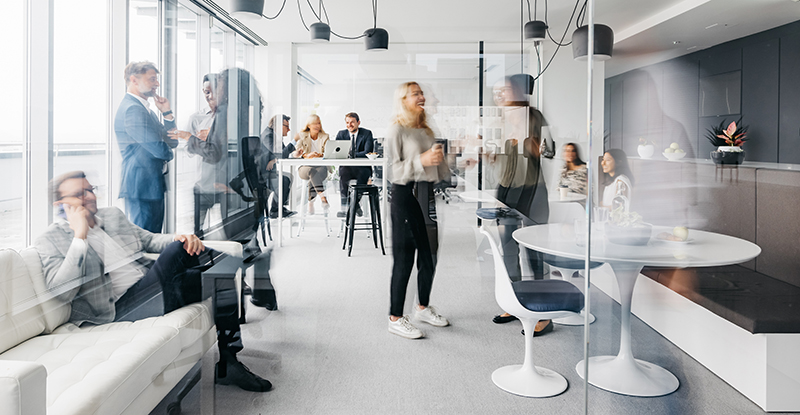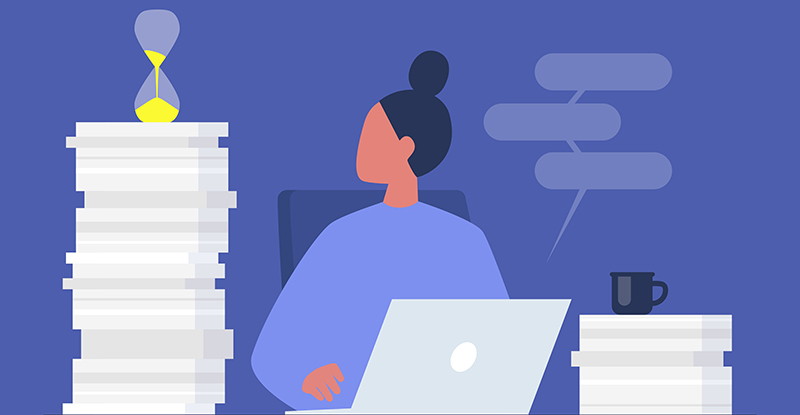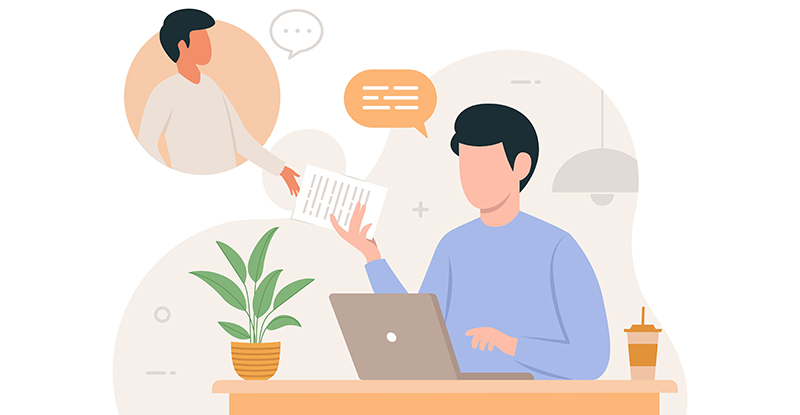
In this podcast episode, Robin Rosebrugh, workplace consultant with Steelcase, chats with Vince Kanasoot, communications specialist with CPABC, about ways organizations can redesign their physical workspaces and strategize their hybrid work cultures to spark more employee engagement, productivity, and innovation. Part of our Coffee Chats with CPABC podcast series.
While in-person collaboration and interactions were key factors that drove employees back into the office, often in hybrid formats, organizations are now finding that these incentives are wearing thin. How can employers reimagine their office settings and overall workplace culture to truly get the most out of hybrid systems?
CPABC recently spoke with Robin Rosebrugh, workplace consultant at Steelcase. Robin shared her thoughts on how organizations can capitalize on the opportunities that hybrid culture brings, as well as how to reimagine the physical office to make the time employees spend there more productive and innovative. You can listen the full interview in our podcast episode. Below are some highlights from the conversation.
Disclaimer: The below interview has been edited to adjust for word count and consistency with CPABC's newsroom articles.
What are some common barriers that you've seen in workplaces, whether in-person or in hybrid settings, that prevent organizations from fostering innovation and high performance from its teams?
Robin: One common barrier is the erosion of trust between employers and employees that has developed since the pandemic. Hybrid cultures are dependent on managers trusting their employees enough to work from home and choose which days to come into the office.
Another barrier is lack of intentionality. People have been coming back into the office, but many times there hasn’t been enough strategic thought put into it. As a result, offices that were meant for hundreds of people would only have a few dozen staff showing up on any given day. If re-connecting and collaborating with colleagues is what’s supposedly incentivizing employees to return to the office, then showing up to find there’s only a handful of other people isn’t fulfilling this purpose.
If an organization is in the early stages of revitalizing its workplace culture, what are some good questions that leaders should ask?
Robin: One of the first things leaders should do is check in on their own biases. Leaders often have an idea of how they think their organization should move forward into this new evolution of work, and they’ll gravitate towards research that confirms their view. However, that's not the best path forward. There's a lot of information out there and leaders need to get varied perspectives. This should include reading articles that counter their views to get a better understanding of different ideas and their pros and cons.
Leaders should strive to eliminate binary bias in their concepts of what the office or hybrid work should look like. There needs to be room for ideas that are in-between and fluid, and there will be pros and cons to all solutions.
If a well-rounded, fulsome team isn’t part of leadership conversations, there can’t be a full picture of a potential path forward. As a result, leaders need to consider if they have the right people at the table for these conversations. To get a full picture, you need employees from all departments, including IT, HR, facilities, and more. Every department has their own piece at stake, and a different lens in understanding how we work, and what ways work for their teams.
Can you give us an example of a workplace that you've seen in the past that redesigned its space and organizational culture, and that really excelled afterward?
Robin: According to the Leesman Index, which helps organizations by measuring and analyzing employee workplace experience, workplaces where high-performance happens are spaces where employees can easily find the co-workers, materials, and type of workspaces they need. Employees aren’t losing time when they need to look for a meeting room, a quiet place to do focused work, or a space that buzzes with energy and creative, collective energy.
A great example of this is LinkedIn's current HQ office. Instead of a formal reception area at the entrance, there’s a cafe. Employees can get drinks and food, meet with colleagues, and see other people from different departments. There’s great energy, and the space organically sparks conversations among employees, resulting in the sharing of new ideas and breaking of silos.
As you move through the office, you find different types of spaces for team collaboration, rejuvenation, focus, and more. Employees have choice and control over how and where they get their work done. In psychology, this is referred to as person/environment fit. If you don’t have that fit, an employee isn’t going to be their most productive and efficient self in the workplace, nor will they be as engaged as they could be. As a result, having a variation of space gives employees choice and control over how and when they’re going to get their work done.
Another problem some organizations are having is getting their employees to spend time in the office. When we work remotely, we have a choice in where we want to work, as we can work in different parts of our home, at coffee shops, etc. This personal agency needs to be translated to the office in a way that makes coming into the office better than working at home. Because if the experience of going to the office isn't better than home, then why would anyone want to go to the office?
This is exasperated by having to commute to the office. With the changes over the pandemic, many are commuting only for experiences or when they have to for essential services. As a result, if employees can get an excellent experience at their workplace, such as the experience at LinkedIn HQ, they’ll believe the commute is worth it.
Besides offering variation in work spaces, what are some other ways employers can make the in-office experience more inspiring for employees?
Robin: People get their best ideas when they’re in diffused brain states, such as when people go on walks. The type of divergent thinking that arises allows different areas of our brains to connect with each other. That's when new ideas and innovation spark, and it’s because we’re more relaxed.
We need to have spaces in the workplace that facilitate relaxation and allow us to have our best ideas where we're supposed to have our best ideas. One way to do this is having plants or views of nature outside. Biophilia is the idea that humans possess an innate tendency to seek connections with nature and other forms of life.
Having wood finishes on office furniture, nature-themed artwork, and different types of lighting that look natural, can significantly affect us at the subconscious level, and can reduce our skin conductance, blood pressure, and make us naturally more relaxed.
Vince Kanasoot is a communications specialist with CPABC.



